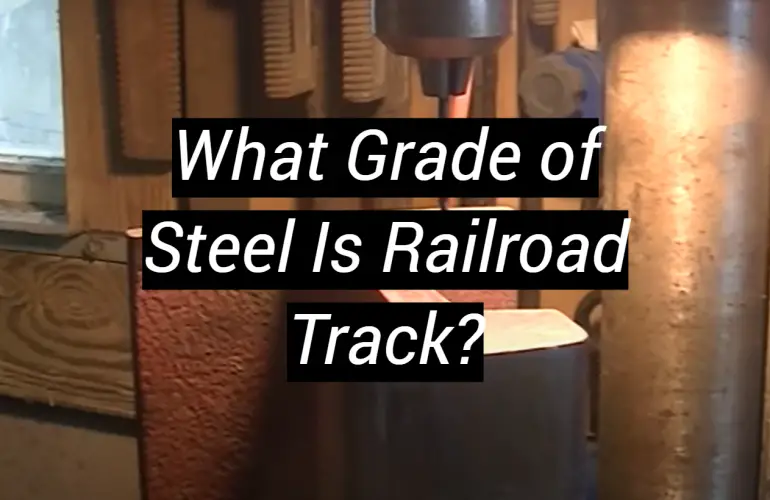Have you ever wondered what kind of steel is used for railroad tracks? You might be surprised to learn that, depending on the line, tracks can be made from low-carbon or high-strength steel.
Trains are responsible for getting people and cargo around quickly and safely, so it’s important that the materials used in rail systems meet industry standards.
This post will cover everything from what metals are used to make railroads to why they’re durable and cost effective. Keep reading if you’d like to find out more about railroad grade steels.
The Main Damages of Railroad Metal
Railroad metal is strong and can last for a long time, but it is not impossible to damage. Too much weight, not enough oil, and other things can cause problems.

These problems include broken rails from too much force, rail twist from extreme temperatures or heavy loads, and fatigue cracks in rail corners from using them a lot.
Typical Material of Train Track Steel
Carbon Steel
The most common type of steel used in railroad tracks is high carbon steel, or “rail steel”. This type of steel is strong, so it doesn’t break easily under heavy loads. It also doesn’t change shape in low temperatures.
Alloy Steel
Another type of steel used in railroad tracks is alloy steel, which has a higher strength-to-weight ratio than carbon steel. Alloy steels also have better wear resistance and fatigue life. [1]
Heat-treated steel
Heat-treated steels are also very strong and durable, and they can handle higher loads than regular carbon or alloy steels.
Railroad track grade steel is important for a safe rail system. Engineers use different types of steel depending on the job. They choose steel that can hold up under extreme temperatures and heavy loads.
The Chemical Composition of Train Track Steel
Railroad track grade steel must have certain chemical compositions to meet industry standards. The steel used for railroads is made of iron, carbon, manganese, silicon, and phosphorus. The percentages of each element depend on the type of steel being used.
The composition also helps the metal stay strong in extreme temperatures.Railroad track grade steel must meet industry standards for safety and quality, so it’s important that engineers use the right type of steel for each job. By understanding what materials are used to make railroads, we can appreciate them even more!
The Mechanical Property of Railway Track Metal
The mechanical properties of steel are important to consider when choosing the right grade. These properties include hardness, plasticity, ductility and strength. The steel used for railroad tracks must be resistant to fatigue and wear and be able to tolerate heavy loads without breaking or twisting.
The strength and hardness of steel also depend on the heat treatment it has received. Heat treatment is a process that improves the strength and hardness of steel by heating it and cooling it rapidly. This improves its performance characteristics, so that it can handle heavier loads.
Railroad track grade steels must meet industry standards for safety and quality. They must be strong and durable enough to withstand heavy loads, extreme temperatures and frequent use. This is why engineers choose the right type of steel for the job. [2]
Strength
Steel is the best material to use for railroad tracks. It is strong and does not break easily. It can also handle heavy loads without bending.
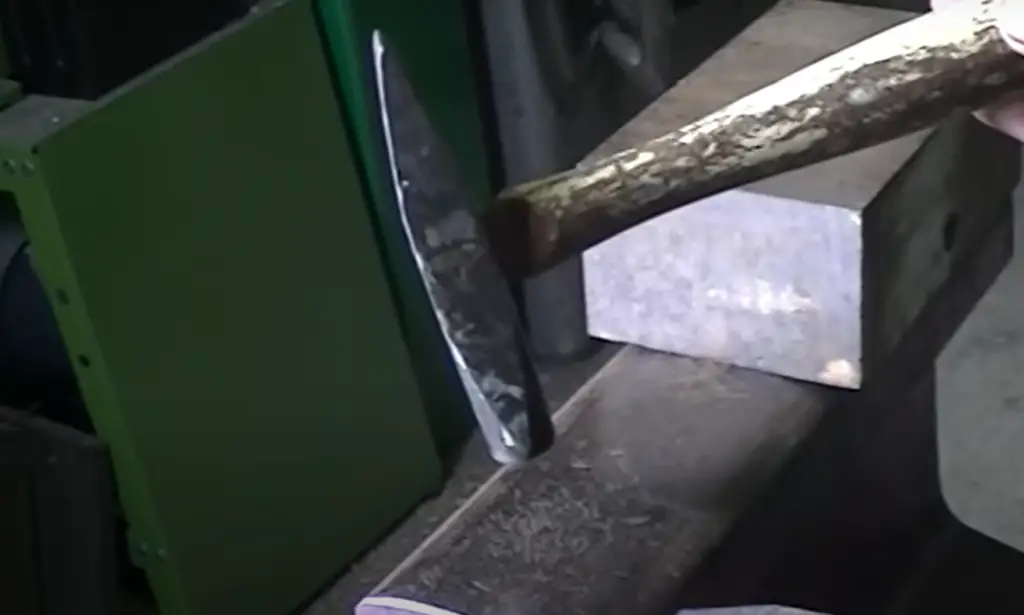
The strength of steel is based on what it is made of and how it is treated with heat. If there is more carbon in the steel, it will be stronger. If there is less carbon, it will be weaker. Changing how the steel is treated with heat can also help to improve its strength.
Strong steel is important for railroad tracks. Engineers must choose a steel that can handle heavy loads without breaking or bending. They should also choose a steel that is strong enough to withstand extreme temperatures and frequent use.
Plasticity
Plasticity is the ability of a material to be shaped or deformed without breaking. Steel has good plasticity, which means it can be bent and formed into different shapes but still remain strong.
Railroad tracks are made from steel because it has good plasticity. The steel can be bent and formed into rails without breaking, so it is perfect for railway tracks.
The plasticity of the steel used for railroad tracks can also be improved by heat treatment. Heat treatment makes the steel more malleable, so it can be bent and formed into certain shapes without breaking or weakening.
Hardness
Hardness is an important property of steel. Hardness measures how well a material resists surface wear and abrasion. Steel that has been heat treated is stronger and harder than untreated steel.
Railroad tracks are made out of steel which needs to be hard in order to withstand heavy loads and frequent use.
Resilience
Resilience is the ability of a material to resist shock and vibration. Steel is a resilient material, meaning it can handle heavy loads and frequent use without breaking or weakening.
Railroad tracks need to be strong and not break. That is why engineers choose steel to make railroad tracks out of. Steel can handle a lot of weight without breaking.
Steel is also a good choice for railroad tracks because it will not break down as quickly under extreme temperatures or other environmental conditions.
Fatigue Strength
Fatigue strength is the ability of a material to resist damage from being used over and over. Fatigue is when an object gets weaker and starts to crack from being used a lot. Steel is resistant to fatigue because it can handle a lot of stress without breaking or cracking.
Railroad tracks need to be strong so they don’t break. Engineers choose steel because it is strong and can handle being used a lot without getting weak or breaking.
Properties of Train Track Steel
Train track steel is an alloy of iron and other elements such as carbon, phosphorus, silicon, manganese and sulphur. Train track steel must meet certain standards for strength, hardness, plasticity and resilience so that it can withstand heavy loads and frequent use.
Engineers pick the right grade of steel for train tracks depending on how strong, hard, and flexible it is. They also look at how well it bounces back. It is important to choose the right grade so that the tracks will be safe and last for a long time.
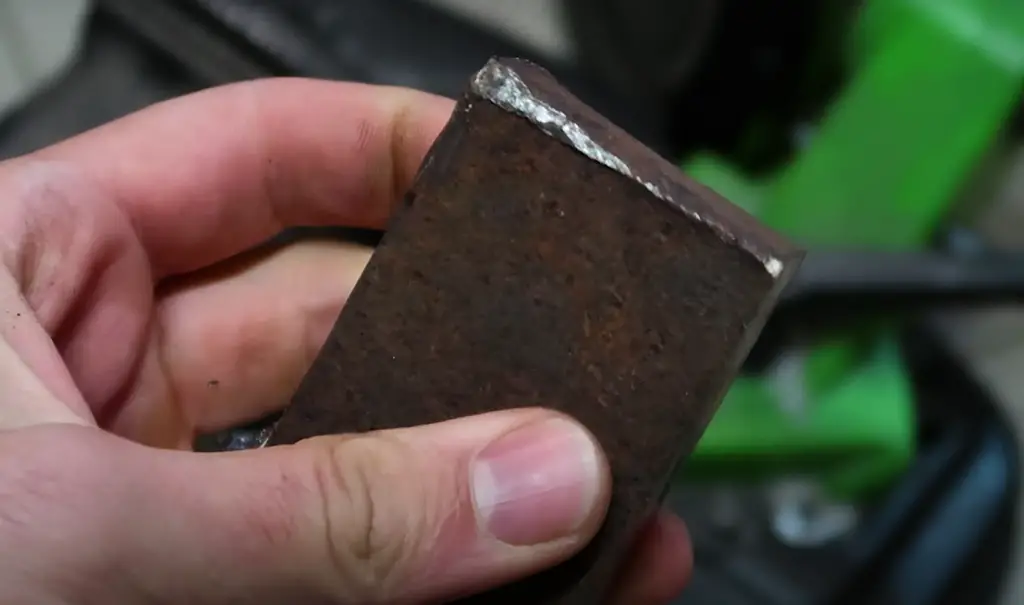
Steel used for train tracks must be heated to make it stronger. Heat treatment also makes the steel more flexible so it can be bent into shapes without breaking. The steel will also be less likely to get tired. [1]
Tips for Working with Railroad Track Steel
When working with railroad track steel, it is important to follow certain precautions. Steel can be dangerous if not handled properly.
Here are some tips for working with railroad track steel:
- Wear safety equipment including gloves, goggles and protective clothing when cutting or welding rail track steel.
- Use the correct tools for the job – such as drills, saws, hammers and wrenches – to prevent damage.
- Follow manufacturer instructions for cutting or welding the steel.
- Use appropriate safety measures when handling or transporting the steel.
- Store railroad track steel safely and securely away from moisture, heat and cold.
Variations in Steel Grade
The grade of steel used for railroad tracks is important for safety and longevity. Different grades are available depending on the type of track.
Light rails are made from steel that is not as strong or hard as other types of steel. Light rail tracks do not need to be fixed as often as other types of railway tracks.
Heavy rails are made from high-grade steel. They are stronger, harder and more resilient than light rails. Heavy rails are used for carrying heavy loads but require more maintenance than light rails.
The American Railway Engineering and Maintenance of Way Association (AREMA) has standards that railroad track steel must meet. This means that the steel used for different types of railroad tracks must be a certain grade. The AREMA publishes rail specifications with information about what grades of steel are used for different types of railroad tracks.
Railroad track steel is an important part of any railway system. It is important to choose the right grade of steel for the job.
Different grades are available depending on the type of track and these should be selected based on safety and how long you need it to last.
Practical Uses of Train Track Steel
Train track steel is a versatile material with many practical applications. It can be used to construct bridges, buildings and other structures that need to be strong and durable.
Steel rail tracks are used in the construction of buildings, bridges, tunnels and other infrastructure. Steel is also used for fencing around industrial sites and railways.
Steel tracks are also used in the mining industry. They help to move heavy materials between sites. Steel is very strong and it can handle the weight of large trucks and vehicles.
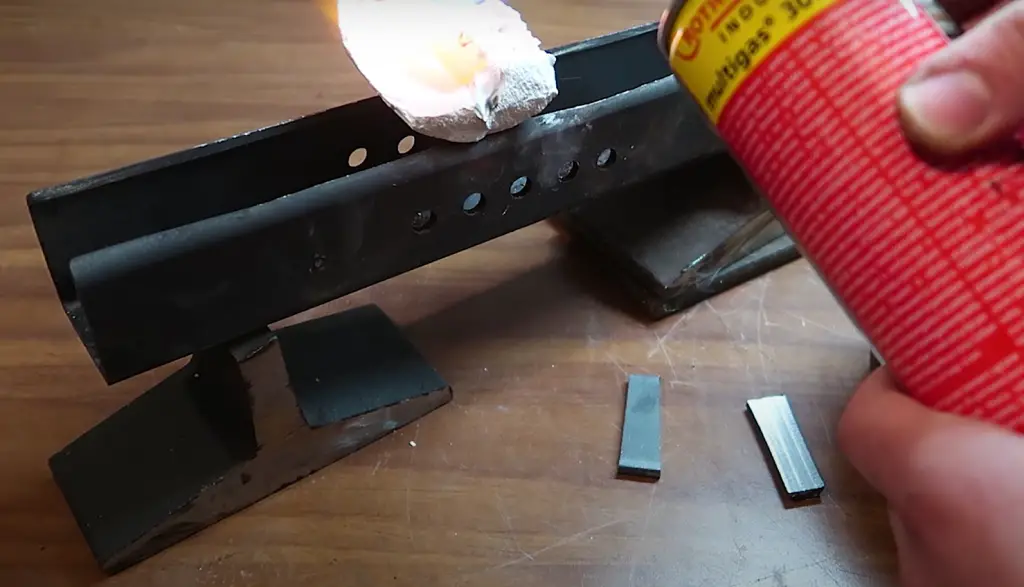
Steel from train tracks can be used to make sculptures, art installations and furniture. Steel is a material that can be cut and welded into different shapes. It can also be painted or polished to create one-of-a-kind pieces.
Finally, steel rail tracks are used in the construction of train tracks. Steel is strong and resilient so it can handle the weight of heavy trains and frequent use. Train track steel must meet certain standards in order to be safe for use.
FAQ
Which steel is used in railway tracks?
The steel used for railway tracks is usually high-grade steel. This means it is a strong type of steel. There are different grades, or levels, of high-grade steel. The grade depends on the type of track needed.
Light rails are made from steel that is not as strong or hard as other types of steel, while heavy rails are made from high-grade steel which is stronger and more resilient.
How long does railroad track steel last?
The type of steel used for railroad tracks depends on the grade of steel. The American Railway Engineering and Maintenance of Way Association (AREMA) publishes rail specifications with information about what grades of steel are used for different types of railroad tracks.
Generally, higher-grade steel will last longer than lower-grade steel. Proper maintenance and inspection is also important for the longevity of railroad track steel.
What are the safety measures when handling or transporting railroad track steel?
When you store railroad track steel, keep it away from moisture, heat and cold. Also, when you are welding or doing other work on the steel, wear safety glasses and gloves. Before using the steel, check it for damage.
If any part is damaged or weakened, get a new piece of steel. Make sure that everyone who is working with railroad track steel knows what they are doing by providing proper training.
What is the steepest railroad grade?
The steepest grade of railroad track is called a “ruling grade” and it can be up to 2.2% (1:45). This means that for every 45 feet (13.7 m) of track, the elevation rises 2.2%. Ruling grades usually apply to heavy rail lines or tunnels, while lighter rail lines usually have a ruling grade of 1.5% (1:67).
Even when there are curves on the track, the ruling grade applies to the straight sections of track.
What material were the rails of the track made out of?
Rails used to be made from wrought iron, but now they are mostly made from steel. Steel is a good material for rails because it is strong and does not corrode.
Steel can also be cut and welded into different shapes. Rail tracks are typically made from high-grade steel to ensure they are safe and reliable.
Are railroad tracks cast iron?
No, railroad tracks are not typically made from cast iron. Cast iron is a brittle material that breaks more easily than steel.
Steel is the preferred material for making rail tracks as it is stronger and more resilient.
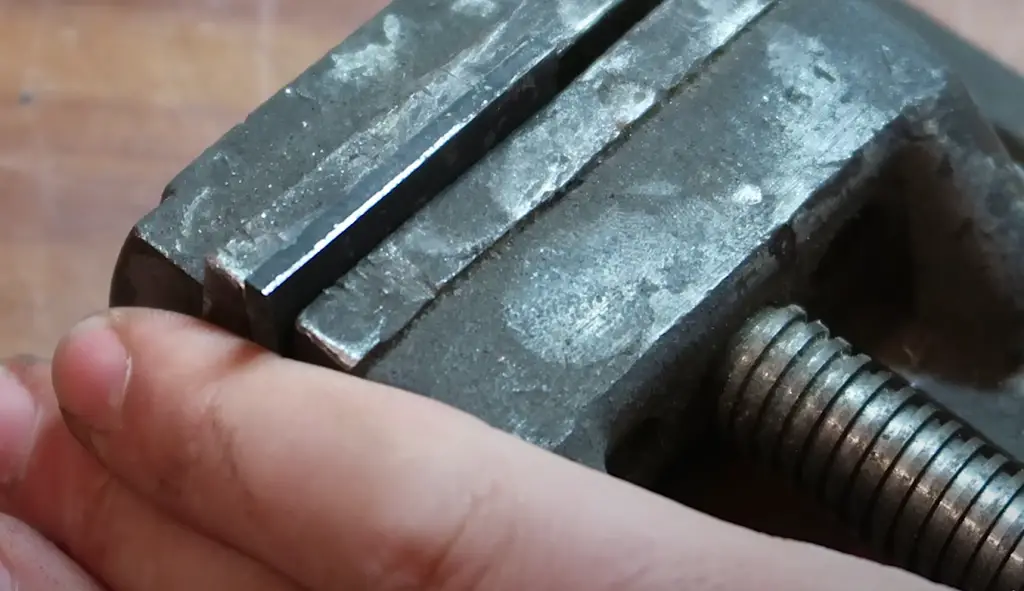
Additionally, steel can be cut and welded into different shapes which makes it easier to install and maintain railroad tracks. Steel also does not corrode or rust like cast iron does.
Is railroad track good for knife making?
No, railroad track steel is not good for knife making. Railroad track steel is made from high-grade steel which means it is strong and durable, but it is not the right type of steel for knives.
For knives, you should use either stainless or carbon steels as they are much more suitable for knife making.
The type of steel you use will depend on the type of knife you are trying to make. Carbon steels should be used for knives that need extra strength, while stainless steel is better for knives that will be exposed to moisture.
Why do railway tracks not rust?
Railway tracks don’t rust because they’re made from steel. Steel doesn’t corrode like iron or other metals, so it doesn’t need an anti-rust solution. The grade of steel used for railway tracks is high enough that it won’t easily corrode or rust.
Additionally, regular maintenance and inspections help keep the rails in good condition for longer periods of time.
What can be done to keep railroad tracks from wearing down?
Regular maintenance and inspections are key to keeping railroad tracks from wearing down. Inspections should include checking for damage or corrosion, as well as cleaning and lubricating the track. As well, any rail that is weakened or damaged should be replaced immediately.
Additionally, proper drainage around the track will help protect it from moisture which can lead to corrosion or other damage. Finally, any nearby vegetation should be kept away from the rails as roots can cause instability and weaken the tracks.
How often should you inspect railroad track steel?
The steel for railroad tracks should be inspected at least once a year. But if the tracks are used a lot or if they are in bad condition, they should be inspected more often – every three months.
During an inspection, people check the rails for damage or rust. They also clean and oil the rails if necessary. If any of the rails are weak or broken, they should be replaced. Inspections help to make sure that the tracks are safe to use.
Does railroad track steel require maintenance?
Yes, railroad track steel does require regular maintenance. This means that it needs to be checked and fixed regularly. Tracks should be inspected at least once a year. During an inspection, people will check for corrosion or damage and clean and oil the rails if necessary.
Do railroad tracks use a specific grade of steel?
Yes, the steel used for railroad tracks is usually high-grade. This is because the tracks need to be strong enough to carry heavy loads over long distances. The type of steel used depends on the kind of track and how it will be used, but it is usually a very strong alloy steel.
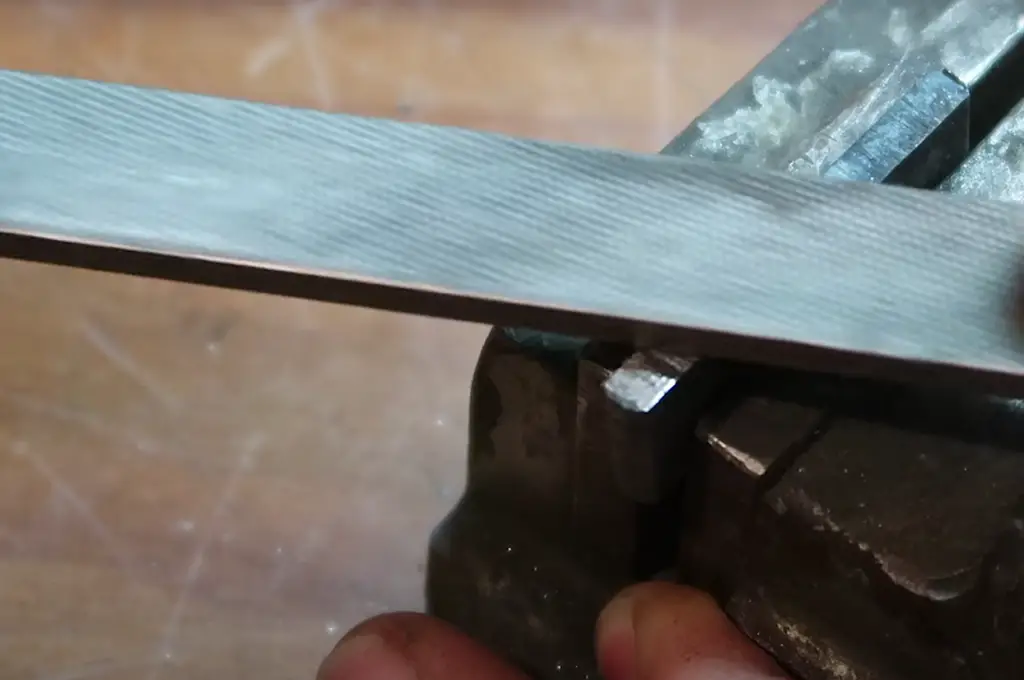
The steel is also often heat-treated to make it even more durable and strong. This ensures that railroad tracks are safe for people to use.
Can railroad track steel be recycled?
Yes, railroad track steel can be recycled. Once the tracks are old or damaged too much to use, they can be taken apart and melted down. Then the steel can be used again to make new things like products or construction materials.
This helps the environment because we don’t need to get more steel from the earth. It also saves businesses money.
Useful Video: Railroad Track Steel
Conclusion
Railroad tracks are made to be strong so they can hold a lot of weight. The steel used to make them needs to be high quality, but other things are just as important for how long the tracks will last and how well they will work. These other things include installation and maintenance.
If you want to build or upgrade a rail line, we can help you choose the right materials and get the most out of your investment. Contact us today to learn more about our railroad consulting services.
References:
- https://makeitfrommetal.com/what-grade-of-steel-is-railroad-track-uses-and-tips/
- https://railroadrails.com/knowlege/railroad-metal-material-property

